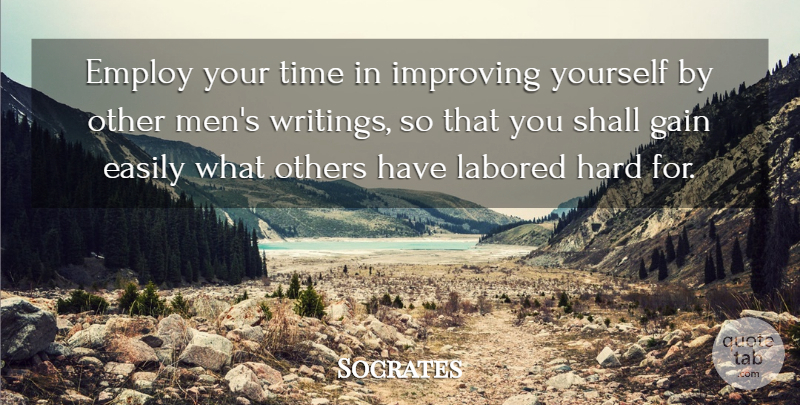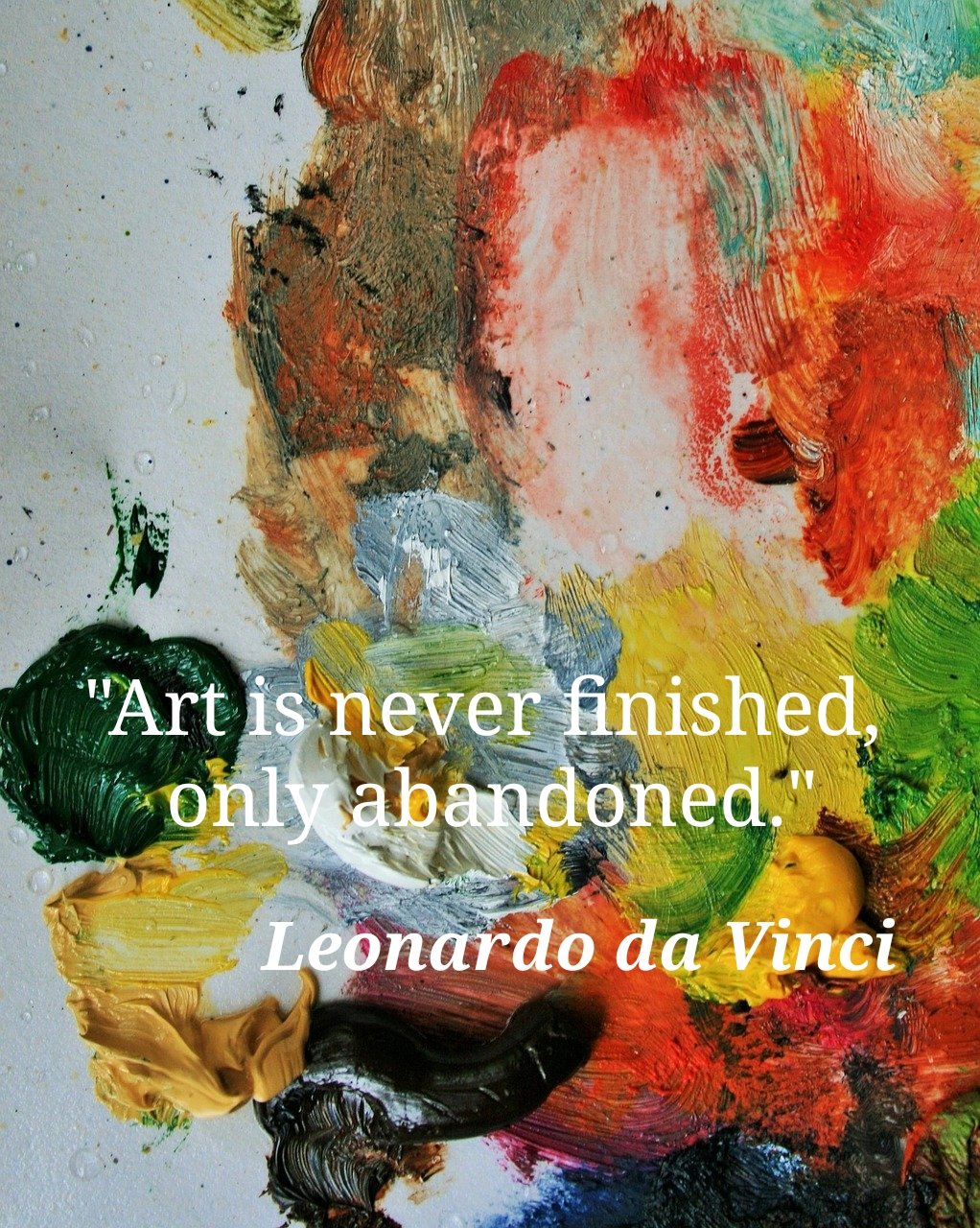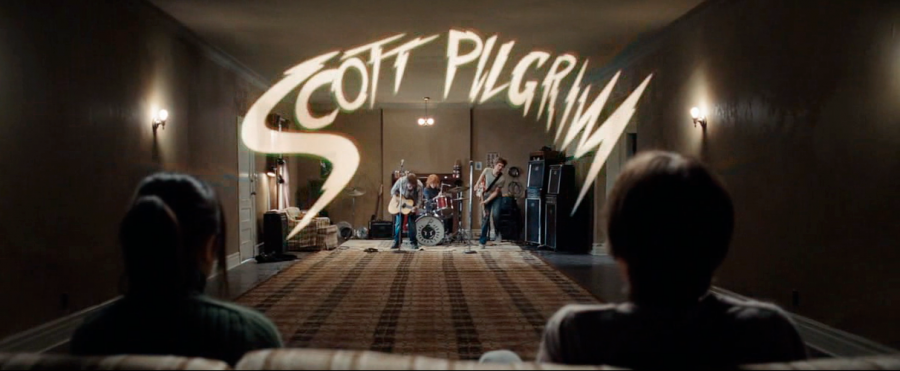a painting is never finished

The other day, I was working on my latest impressionist landscape of Fairfield, Enjoy the Beach, when I looked over at the recently completed painting While the Kids are at School hanging on the wall. Suddenly, a few spots that bothered me a bit when I declared the painting “finished” were bothering me a lot.
With paintbrush in hand and a close-enough colored daub of paint already resting on my palette, I made a few simple adjustments that completely changed how I felt about the painting.
I’ve heard the saying before, attributed to Leonardo da Vinci (though I’m doubtful he was the source) but this was the first time I’ve had the nerve to potentially “mess up” a “completed work.”

I didn’t mess it up, though. The issues I’d had with the work couldn’t be solved alla prima, so I declared the work “good enough,” called it done, let it dry, posted a photo and explanation of the work online, and even hung it on the wall of my studio. Signed, sealed, delivered.
good enough
Good enough is the grace I give myself in my paintings. In my weavings, in my DIY projects, halloween costumes, I let “better than before” be my guide. During my magical mornings, I do the same thing every day because I know that who I want to become will be built through the identity that these practices foster. I do yoga not just to flex the impressive hand-balancing pretzel poses I’ve trained my body to do, but also to relax into foundational poses in preparation for putting myself in positions I have not mastered. When I do HIIT training at my local gym, I push myself to lift heavy but I know that if I’m straining or my form is suffering, I will go down to a lighter weight.
Through therapy and self care, I’ve learned “good enough” is a gift of softness to myself. However, this softness, this grace does not extend to my writing.
My biggest aspiration for the longest time has been to be a published author. Yet, I don’t publish a thing–not even on this platform, where I have the freedom to share whatever and whenever I please.
Therein lies the problem.
too much creative freedom is stifling.
This may sound counterintuitive, but I firmly believe that creativity is best expressed within boundaries. I’ve got a great example for this: Robocop.
My teenager has become a real cinephile. Recently he was telling me that Robocop was the second best film “after Scott Pilgrim” (we can all agree that Scott Pilgrim vs. The World is genius, right?)

I’m nearly never in front of the TV by choice, and if I am my nose is in a book while my preschooler indulges in Octonauts or Jelly, Ben and Pogo or Blippi. But we decided I’d sit still long enough to watch Robocop with him in increments. In discussions about it, he shared that one of his favorite things about it was that there wasn’t any CGI. I prefer camera tricks (which he corrected as practical effects), too. This got me on a soapbox.
With CGI, opportunities are limitless. A creator has an idea for how they want the story to unfold, so they turn that plan over to someone whose job it is to make things happen with the applicable software. The creativity stops once the idea is made. However, with practical effects, you’re limited by the materials and sets presented to you. Though that limitation may seem stifling, it actually allows a bigger group of creators with varying skills to discuss a feasible way to make an idea come to life. The act of going “back to the drawing board” to adjust an idea allows for a sharpening of an idea, an upgraded, 2.0 or 3.0 version. The same applies for films with bottomless budgets: not enough hiccups to improve on earlier drafts.
Limitations create obstacles, but those obstacles force creators to hone in on details that create a better end result.
I’ve learned that limitations suit me. In painting, I limit the time frame spent on a work to a few days, otherwise the paint dries, my enthusiasm dries, and I overwork a piece and throw it out of the loose impressionist style I prefer. I limit my journaling practice to 20 minutes at 4:45 in the morning, otherwise I’m chatty enough to fill my days writing about life rather than living it. Working out, yoga–the habits I’ve become best at have a simple start and finish time.
That’s not how I’ve been treating my writing. Rather, I’ve got a bunch of overworked ideas stewing in my drafts folder. Places I’ve visited that I’m concerned aren’t recent enough to share, thoughtful posts on book recommendations that are perhaps too long for the medium…
That just may be the other problem I’m facing.
what is appropriate for the medium?
When I was writing my first blog TWENTY years ago, there wasn’t an answer for that question. A blog was an online journal. For some, it was poetry, for others, a photo journal. For most, it was the same ramblings of a diary but in the machine in which they could carry on an AOL instant message conversation. Simpler times.
That was before “blogger” was a profession that was synonymous with “influencer.”
That’s the biggest thing that led to me to back away from this platform. If I blogged, common knowledge would have it that I’d share those posts on social media. I’d promote my website with lots of hashtags on Instagram, try and get more traffic to my writing, and the end goal should be to be paid through sponsored posts. But that could not be farther from what my end goal is.
I’m happy for people that are able to monetize their passions and all, but influencer culture clashes with my core values and this blog is supposed to be about navigating my own inner workings, sharing tips for travel, DIY projects, creative shit. It’s supposed to be play, not work. I wanted to spend less time on Instagram, not more. When I thought to be a “successful blogger” meant I was supposed to do all the marketing and sales that influencers engage in, I stopped wanting to blog at all.
a customized vision of success
What is a “successful blogger,” anyway? Someone said that about me a couple of times at some dinner parties and that left me confused. I get consistent traffic, but metrics need to be higher for that, right?
When I was figuring out what that would mean for me and what an end goal would look like, I was looking at two different versions of blog: the influencer route, which I’ve expressed above as not the path for me, or blogging for businesses on their websites, for their product or service. I’ve worked in that realm and I found myself too often trying to apply “rules” I learned about blogging for brands in my personal blog TOO MUCH. The post isn’t a fail if I don’t accompany it with an eye-catching thumbnail for Pinterest or “enough” images to break up the text.
My customized vision for success is:
- to help others gain confidence in their abilities to pursue and complete creative projects
- to share progress and musings as I develop myself as a gift for others on the same journey
- present tips and tricks to guide creative endeavors and exploration from local to worldwide
- to connect with others’ emotions or personal experiences, so they feel less alone
most of all: - to ORGANIZE all the thoughts that are consistently swirling around my head. As a creative, I’m consistently getting ideas, hyperfocusing on those ideas, gathering excessive amounts of research from various sources…then sometimes (often?) scrapping those ideas due to constraints of one type or another. I think the ideas I scrap are still good, and could benefit others as a jumping off point or source of inspiration.
I don’t need bigger readership or traffic. I want to help people with the tools that I have: great ideas, a distinctive perspective due to the books I read and life I’ve led and creative work in a wide range of mediums.
art is never finished
…and neither is writing. My plan is to give myself that grace, allow myself to fumble with my writing, and recreate a writing practice. To share old-ish tips that may be of interest to someone in the future, or might just help me clean out my camera roll from all the “future blog post” excessive photos I’ve taken over the years. Either way, it’ll help someone.
I’m going to create more limitations for my writing by deciding on an appropriate amount of time I’ll allow myself to commit to a work before PUBLISHING it and beginning another. Even if a former client wanted me to write 2,000 word blog posts for SEO maximizing, I can write things in parts. My limitation will be a timeframe.
choose your limitations wisely
I realize now, through this writing, that I did indeed have limitations placed on my writing. The limitations were based on the comparisons I made to existing blogs, rather than limitations that work for me individually.
My limitations will not determined by others’ expectations, and I’ll allow my writing to be “good enough.” I hope you’ll show yourself that same grace, too.
I too subscribe to the ‘good enough’ philosophy. There’s always a part of me wanting to tweak my writing more, but like someone who stops eating because he’s not hungry (versus wanting to feel full), I have to arbitrarily set a limit to my shenanigans. Great exploration of the topic here. Thanks for sharing!
[…] painting or another creative endeavor, don’t find yourself mimicking Atlas pushing a rock uphill. A painting is never finished, after all—so listen to your intuition: are you having trouble with a work, or have you already learned all […]
[…] sharing doesn’t mean it’s complete! This is just a snapshot in time, as I’ve realized that no room ever feels “finished” for […]
[…] limited to the words in the grouping. I’ve written before about the benefits of creating within limits. Too much creative freedom is stifling, the boundless opportunities are apt to make an imaginative […]
[…] the results! I see details I would do differently if I ever wanted to take another stab at it, but this one is done. I feel like I crushed […]